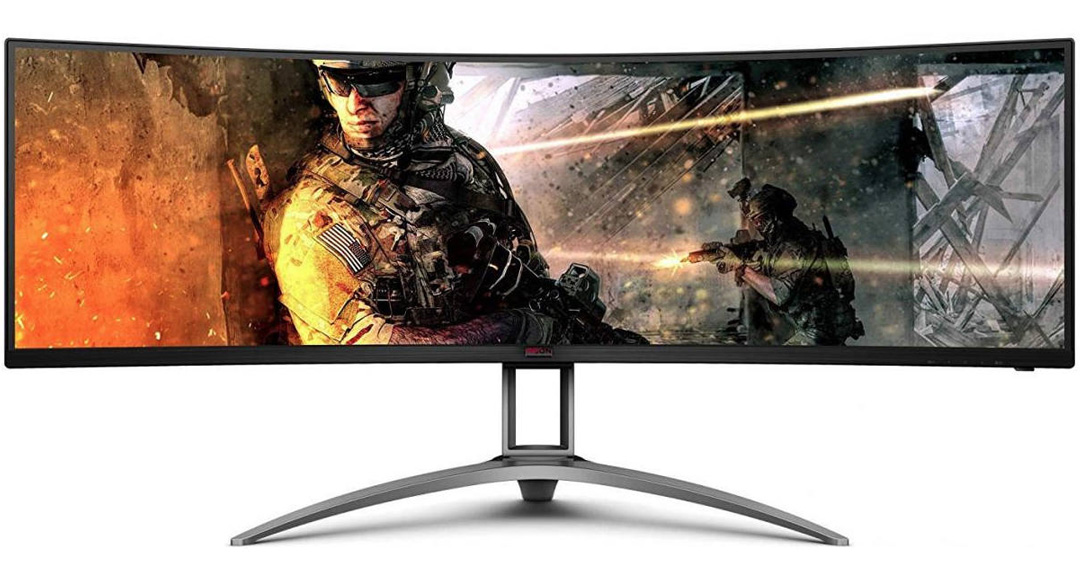Monitors
Computer Monitors: How to choose the right display
For the uninitiated, choosing the right computer monitor can be a complicated process - with hundreds of different variables to consider. Whether you need a basic PC monitor for everyday use or an ultra HD 4K monitor for crisp visuals, you’ll find a huge range of monitors available from PC Case Gear.To help you find the best computer monitor for your needs, we’ve put together this handy buyer’s guide, which explains the most important features to look for, based on, what you’ll typically be using the monitor for.
Gaming Monitors for esports & competitive gaming
For competitive Gaming you need a low latency ‘fast’ display. Aside from the obvious issue of screen size, here are a few points to watch out for when selecting a Monitor for esports:- TN-Panel: Twisted Nematic Panels are fast in both response time and refresh rate. They are also less expensive than IPS-Panels.
- Refresh Rate: In general, a typical display for Gaming with a TN-Panel should have a refresh rate of at least 120Hz. Even better would be 144Hz, 165Hz, or higher.
- Response Rate: For a Gaming displays, the response time - which is measured in milliseconds (ms) - should be as low as possible. Also, another extremely important factor is the response rate "grey to grey" (GtG), which should be under 4ms.
- Resolution: The ratio between Resolution and Panel Size is another important variable to bear in mind. In general, the larger your monitor’s Panel size, the higher the resolution you will need. For esports applications Full HD (1920x1080 pixels) is most common resolution used.
- Panel Size: esport pros mostly play on 24inch monitors and in Full HD. This combination offers them the optimum pixel density. For a 27inch display, WQHD (2560x1440px) will have the ideal perfect pixel density.
While higher resolutions tend to produce a cleaner and crisper image, they also place greater demands on the GPU. This can introduce performance lag between on-screen action and your controls (whether keyboard and mouse or gamepad).
For certain genres, for example turn based RTSs, this may not be an issue. Indeed, for casual gamers the benefits of higher resolutions may outweigh the drag on performance. However, for esports pros, particularly those playing fast action games such as shooters / FPSs, input lag would most certainly be an issue and as a result Full HD should be sufficient resolution to meet their needs.
4K UHD Gaming Monitors: Enjoy Games in Ultra High quality
Ultra High Definition (UHD) has with 3840x2160 pixels 2 times the number of pixels than Full HD (FHD). UHD Monitors in general offer a clearer picture than FHD Monitors, especially when comparing the same Panel size. The much higher pixel density of UHD Displays also allows for larger Monitors of 28in, 32in or beyond, while still keeping a smooth and un-pixilated experience. A Full HD Display in that size would look grainy and pixilated, because each individual pixel would be too large.Compared to Full HD, UHD Displays in general have brighter colours, especially with an IPS Panel. But the better image quality comes for a price: lower refresh rates and higher response times. Also, you need a high end Graphics Card to power 4K Games. But UHD Monitors are not only great for Gaming. For some professional applications and tasks, such as picture or video rendering, these screens offer significant value.
If you use your computer for any form of photo, video or multimedia editing then a full high definition IPS monitor should be your starting point. IPS stands for in-plane switching and is a type of LCD display that offers a wider range of viewing angles and more accurate colour reproductions. The higher pixel density of UHD displays will allow you to see the finest detail in your work and the IPS display will produce beautiful, true-to-life colours, that will make your work shine.

2K WQHD, Curved & Ultra wide: The Golden Middleground
Right between FHD and UHD we find WQHD (Wide Quad HD) with 2560x1440 pixels. This resolution basically combines the benefits from both FHD and UHD. You don't need as much graphics power as required by UHD to get a smooth scrolling image and you still can achieve high refresh rates of 144Hz or higher. The optimal size for an WQHD Monitor is between 27in and 32in.While FHD, WQHD and UHD all have an aspect ratio of 16:9, there are some Displays with an Utra wide aspect ratio. Such monitors are more wide than tall. An aspect ratio of 32:9 on a Full HD Screen would result in a resolution of 3840x1080 pixels, and 5120x1440 on WQHD. These Ultra wide Monitors are great for certain games, but really show their benefits when users are working with large information dense data, spreadsheets or video rendering.
Additionally there are several curved ultra-wide screens availble. They are perhaps not the best for professional gaming since users cannot view the entire screen at once, having instead to tilt their necks to parse the entire scene.
However they are a great for film enthusiasts and are a good alternative to the traditional dual screen setup popular in offices. In particular as users have a view uninterrupted by screen edges.





